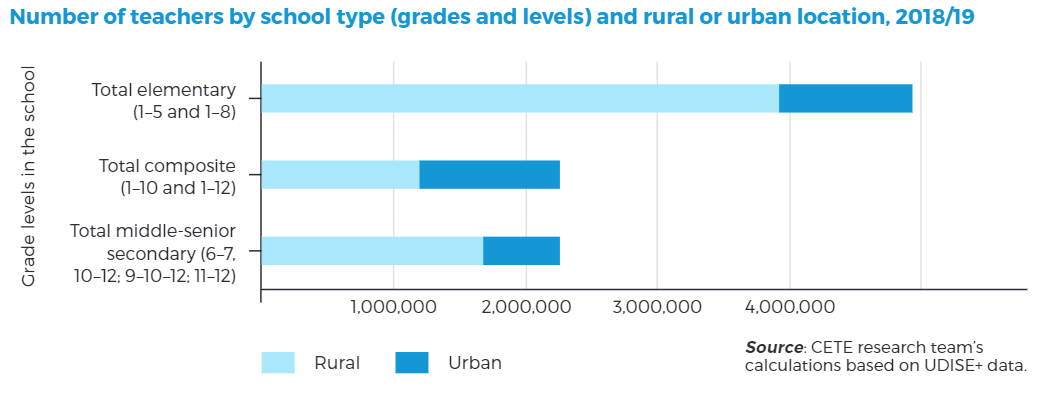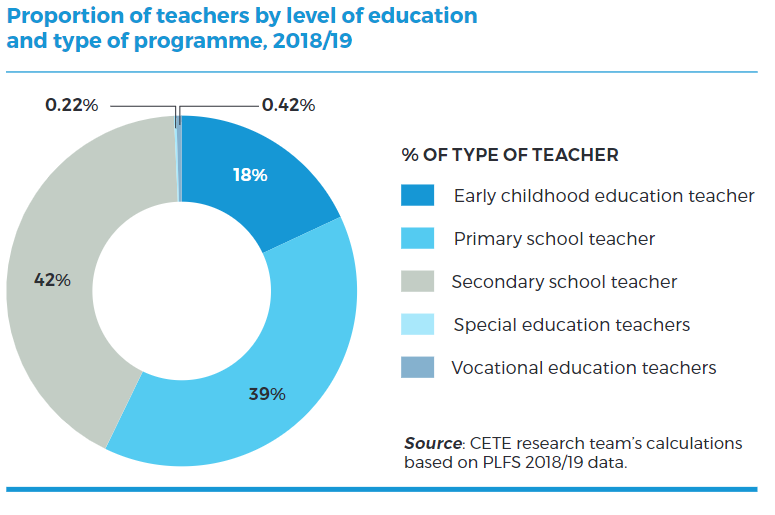ForumIAS announcing GS Foundation Program for UPSC CSE 2025-26 from 19 April. Click Here for more information.
ForumIAS Answer Writing Focus Group (AWFG) for Mains 2024 commencing from 24th June 2024. The Entrance Test for the program will be held on 28th April 2024 at 9 AM. To know more about the program visit: https://forumias.com/blog/awfg2024
Contents
What is the news?
United Nations Educational, Scientific and Cultural Organization (UNESCO) has recently released its 2021 State of the Education Report (SOER) for India: “No Teachers, No Class”.
About the State of the Education Report (SOER) for India
It is an annual flagship report of UNESCO New Delhi. So far, two editions have been released in the past and this is the third edition of the State of Education Report.
The UNESCO analysed two data sets for the preparation of the report. These are the Unified District Information System for Education (UDISE+) 2018-19 round and the Periodic Labour Force Survey 2018-19.
What are the key findings of the State of the Education Report (SOER) 2021?

Lack of teachers: The data suggests that the teaching cadre is generally young, with over 65% of teachers aged less than 44 years. But, in about 15 years, 27% of the current workforce will need to be replaced. The workforce has a deficit of over 1 million teachers (at current student strength).
Apart from that, almost, 69% of teachers in India are working without job contracts in private schools.

Poor student-teacher ratio: The overall number of teachers (around 9.5 million) looks perfect to maintain a good pupil-teacher ratio. But there is a segmental disparity. For instance, the pupil-teacher ratio (PTR) at senior secondary schools is 47:1 as against 26:1 of the overall school system.
Prevalence of single-teacher institutions: At the national level, 7% of schools are single-teacher schools, the percentage is far higher in several states. Around 10% to 15% of schools in several states were single-teacher institutions.
Prevalence of under-qualified teachers: 7.7% of teachers in pre-primary, 4.6% at the primary level and 3.3% upper-primary are under-qualified.
Women make half of the teacher workforce: Half of India’s 9.43 million school teachers are women. In some states and union territories (UTs) over 70% of teachers are women. These include Chandigarh (82%), Delhi (74%), Kerala (78%), Punjab (75%) and Tamil Nadu (75%).
Low retention rates: Overall retention is 74.6% for elementary education and 59.6% for secondary education in 2019-20.
Low access to the Internet: Access to the internet in schools is 19% all over India – only 14% in rural areas compared to 42% in urban areas.
Technological challenges: The use of technology in education has exposed a range of issues – lack of devices and Internet bandwidth for a significant proportion of students, lack of preparedness of teachers in the use of technology, and lack of resources in Indian languages.
What are the key recommendations of the SOER report?
The report recommended the following things,
a) Improve the terms of employment of teachers in both public and private schools.
b) Increase the number of teachers and improve working conditions in North-Eastern states, rural areas and ‘aspirational districts.
c) Increase the number of physical education, music, art, vocational education, early childhood and special education teachers.
d) Build teachers career pathways and provide meaningful ICT training to teachers.
Source: This post is based on the following articles
- “India’s school system faces acute shortage of teachers, says Unesco report” published in Livemint on 6th October 2021.
- “Only 19% schools have access to internet: UNESCO report” published in Indian Express on 6th October 2021.
Terms to know:




